What it takes to deep clean a BART station – a process BART recently doubled in frequency
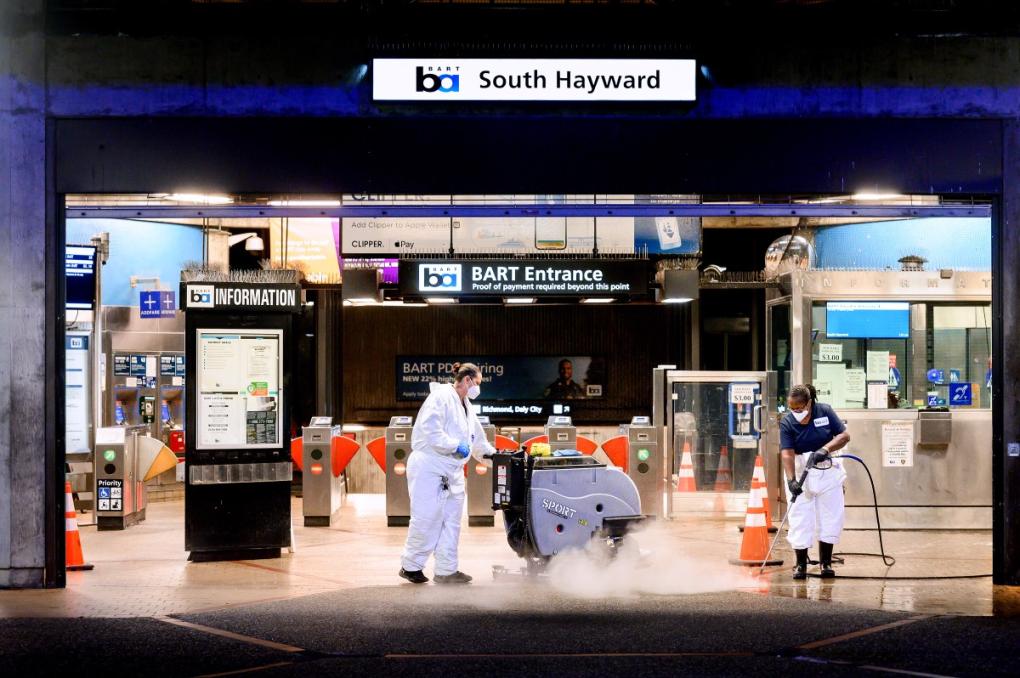
Michelle Slade (left) and Maria Chappell (right) hard at work scrubbing and power washing the entrance of South Hayward Station during an overnight deep clean. Each BART station is deep cleaned every few months.
Watch a short video of the cleaning process here.
Maria Chappell, a longtime overnight station cleaner at BART, has a series of photos stored on her phone of a station platform, wedged among images of her kids and grandchildren. The photos show almost nothing but the floor, and intentionally so.
Chappell snapped the imagery on a recent weeknight after hours of scrubbing, sealing, and waxing the floors with fellow cleaning crew members. If you visit the station in person and look down, you can almost see your face reflected back at you; the flooring truly glitters and gleams after one of these regular, and labor-intensive, deep cleans.
It’s hard work to make BART’s well-trafficked stations sparkle and shine. Each day, hundreds of people pass through, carrying dirt and grime on the soles of their shoes, along with trash, gum, and dust.
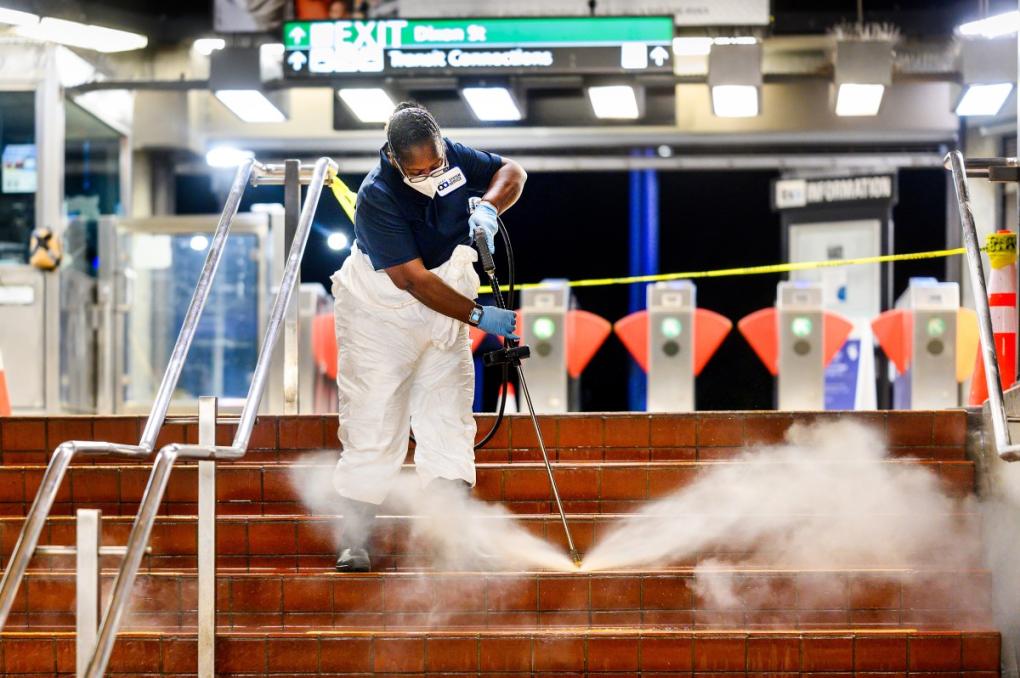
Maria Chappell power washes the stairs.
Chappell and her colleagues spend eight hours a night, working from 10pm to 6am, to make sure that riders travel through clean stations when the sun rises each day. They’re the late-night crew that takes care of the deep cleaning of stations – tasks that can’t be done during the day when scores of riders are passing through.
Every station is cleaned throughout the day when the stations are open to the public. These cleaners handle tasks like picking up waste and mopping and disinfecting, including high-use areas like stairs, escalators, handrails, bathrooms, and Add Fare machines.
Recently, BART doubled the frequency of overnight station deep cleans. These thorough cleans can take workers one to two weeks to complete, and each station in the system will get one every few months, depending on the station’s needs and busyness. BART also recently doubled the frequency of train car deep cleans.
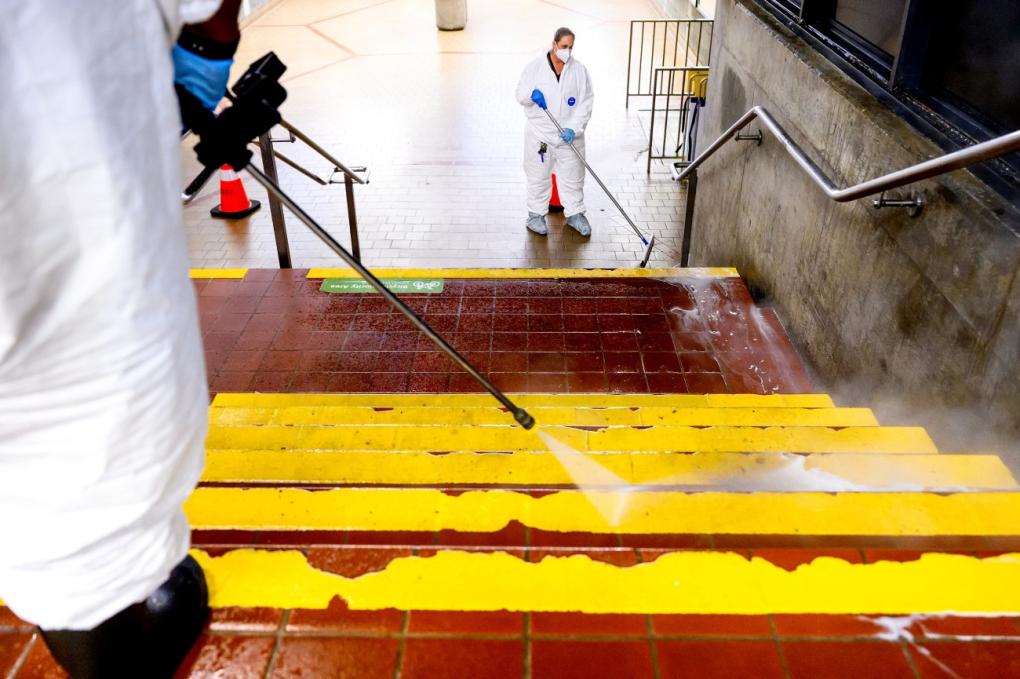
Dirt is blasted off stairs with the hot steam power washer, then the water is squeegeed into a nearby drain.
Cleaners must be detail-oriented while also focusing on the big picture. Overnight cleaners begin their eight-hour shifts at 10pm. At that time, until the station closes around 1am, the cleaners will focus on the concourse and stairs, escalators and elevators, and public restrooms. They surround the work area with orange cones and caution tape to ensure passengers stay safe and out of the way. For safety reasons, platforms are cleaned only when the stations are closed for the night.
The stairs and floors are always the dirtiest parts of the station, for obvious reasons. But the workers clean the entire station, scrubbing and power washing everything from the stairs and station walls, including metal paneling, to the restrooms. Smaller, more sensitive surfaces are washed and disinfected by spraying a cleaning agent on a rag and scrubbing manually. Bleach is used very minimally, solely for biohazard incidents.
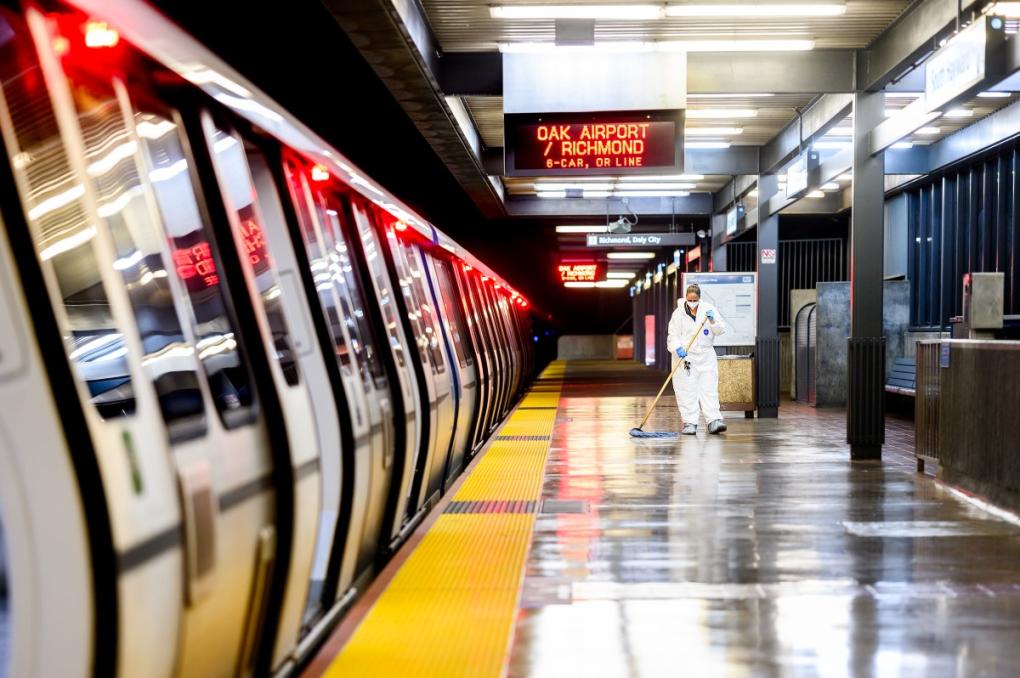
The shining platform floors at Hayward Station after cleaners scrubbed, sealed, and waxed them.
The floor cleaning process, however, is the piece de resistance. Below is a snapshot of the procedure, which is used for station entrances, concourses, and platforms:
- Floors are dust mopped to capture loose dirt and dust bunnies.
- Cleaners run the magnum floor scrubber – a small Zamboni-like machine that’s operated manually – to scrub away socked-in grime and old floor sealant. Sometimes, an alkaline stripper is used to break up seriously caked-in dirt.
- Next, it’s time for the steam power washer, which reaches temperatures of 120 to 140 degrees Fahrenheit, and blasts away grime the magnum scrubber breaks up.
- The water from the power washer is squeegeed into drains. The stairs and floors are dried with dry mops.
The above process is done every few weeks. But every four to six months – one to two months at busy stations – cleaners seal and wax the floors to keep dirt from building up and to make them sparkle. They use mops to carefully layer multiple coats of sealer, which keeps dirt from building up on the floor. Then, they mop multiple layers of wax onto the flooring to make it shine.
A Foreworker oversees the process, assigning tasks based on priority and ensuring the crews are working to meet BART’s high standards.
The Foreworker overseeing Chappell’s crew is Wendy Salazar, who started at BART nearly a decade ago as an overnight cleaner herself. The regular crew includes Chappell, Michelle Slade, Lynn Ensminger, and Josh Brown. They refer to themselves as “the Fremont Crew.”

Foreworker Wendy Salazar is pictured behind a fare gate at South Hayward Station.
Luis Villatoro, the Assistant Superintendent of System Service (the department that oversees cleaning), said Foreworkers with hands-on experience like Salazar are major assets to their crews.
“She knows the process, how to get the work done, and how to run the machines,” he said.
Like many BART employees, Salazar’s path to BART is a story in and of itself. Salazar graduated from UC Santa Cruz with a degree in theater. At the time she applied to BART, she said she was “really just looking for a job that had insurance.”
But the work and her fellow crew members made a deep impact on her. In the nine years she’s been with BART, she has seen herself mature.
“I started here at 22,” she said. “I’ve basically grown up at BART.”
As a cleaner, she said her colleagues gave her a lot of guidance, support, and encouragement. A Foreworker told her early in her career that they could see her as the boss in a few years.
“And here we are,” she said.
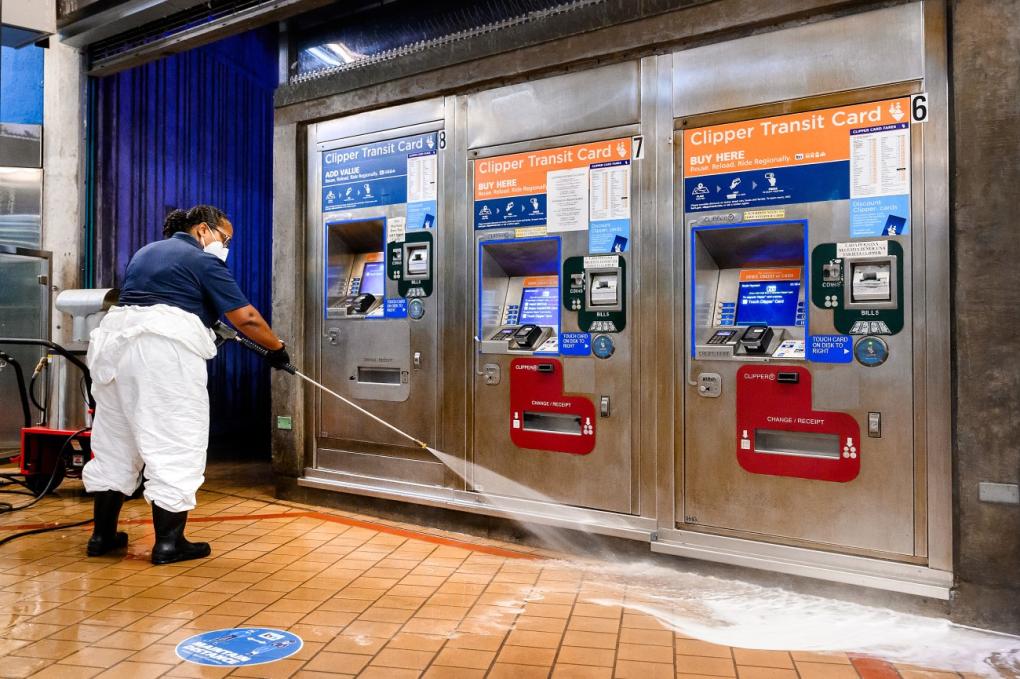
Sudsy water is power washed away near the Add Fare Machines.
Salazar said the public might be surprised to learn how many components go into station cleaning and the specialized skills it requires. Cleaners at BART are trained for two-and-a-half weeks in a classroom setting, as well as on the job.
Salazar said her staff take immense pride in their work.
“On the overnight shift, you handle the bigger projects, and you get to immediately see the results,” she said. “Cleaners get to say, ‘Hey, I did that!’”
Or, like Chappell, they snap a photo to remind themselves of their hard work and the gratification of a job well done.